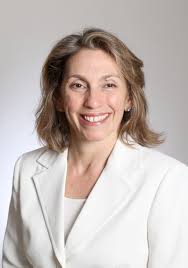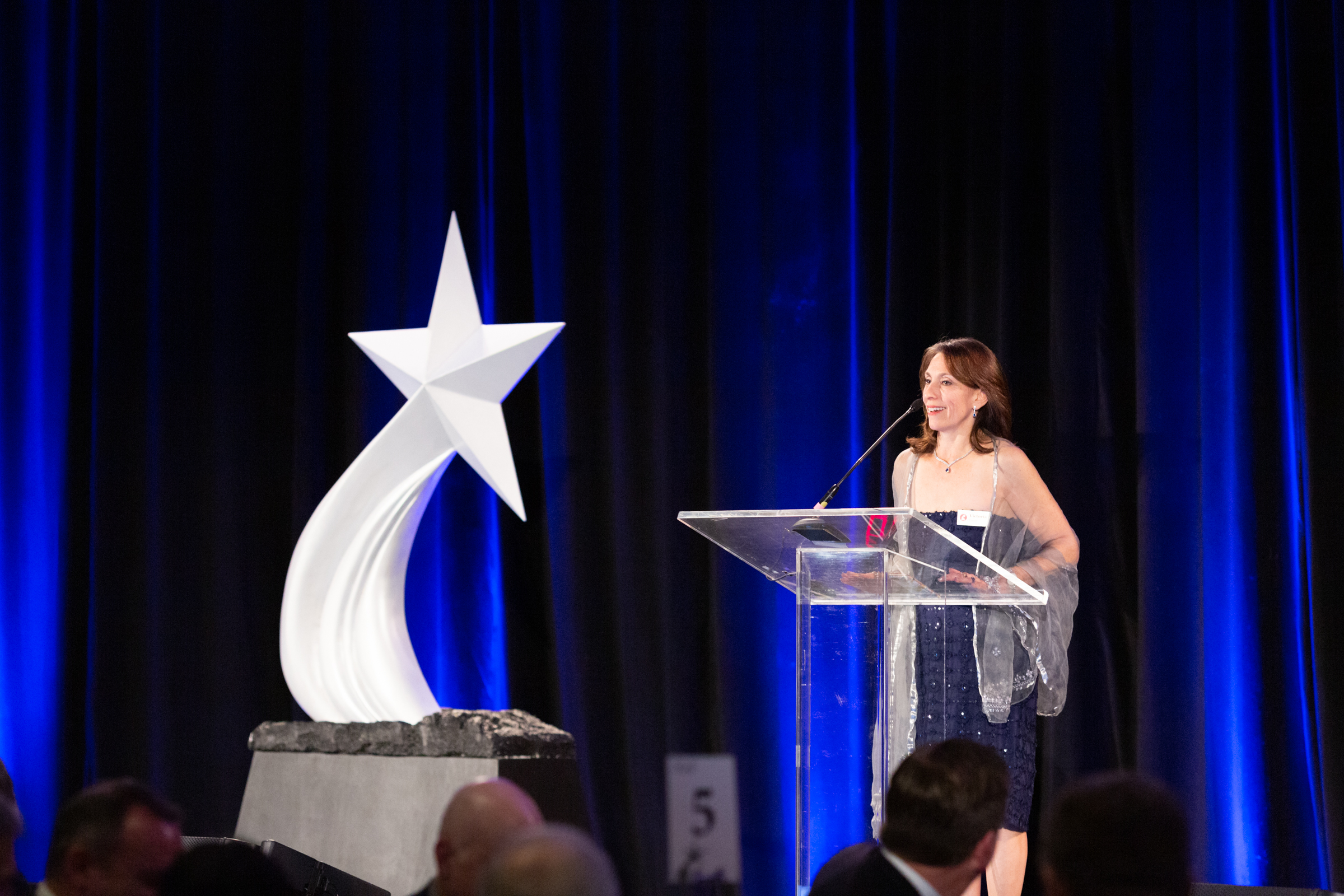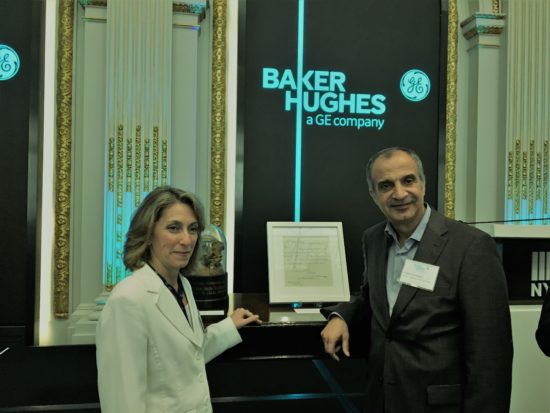Negotiations between General Electric and Baker Hughes were hush-hush. The circle of those “in the know” included a small number of lawyers, financial advisors and executives. Everyone was sworn to secrecy.
Both sides feared that the terms of the transaction – $7.4 billion combining two mega-oil field service companies employing 70,000 people and generating $23 billion in annual revenue – would leak to the news media.
Houston litigator-turned-corporate dealmaker Victoria Lazar was one of the lawyers “in the know.”

“There was a lot of excitement about this deal because it was transformational in the marketplace,” says Lazar, who is executive counsel for mergers and acquisitions for General Electric. “The Halliburton-Baker Hughes deal collapsed in May and our M&A team went right to work, often until 2 or 3 in the morning, to get the deal done before word leaked out.”
GE announced the merger of Baker Hughes and GE Oil and Gas on Halloween day in 2016 – “This was an incredibly fast deal,” she says – but Lazar’s mission was just getting started.
“In most transactions, not much happens between the announcement and the closing,” Lazar told The Texas Lawbook in a series of exclusive interviews. “That was definitely not the situation in this merger. We worked day and night because this deal needed a lot of structural focus to make the operation work properly.”
GE gave Lazar the monumental task of integrating the legal operations of the two conglomerates. By all accounts, it was one of the most complex and creatively structured transactions ever devised in the oil patch and its implementation was executed seamlessly.
A great deal of the credit for the success of the merger goes to Lazar, according to the Texas General Counsel Forum, who honored the Houston lawyer last month with its prestigious 2018 Magna Stella Award for a Major Corporate Transaction.
“The transaction involved several complex steps that had to be accomplished in a short period of time, to effect and execute the complex structure,” Shira Yoshor, a shareholder in the Houston office of Greenberg Traurig, wrote in nominating Lazar for the award. “Victoria deserves significant recognition for the success of this landmark deal.”

Jennifer Smith, a partner in the Houston office of Hogan Lovells, has known Lazar for 28 years. They took the bar exam together, joined Baker Botts at the same time and still play tennis and travel together.
“Even back then, it was clear that Victoria had a ‘big brain.’ She set herself apart from others right away,” Smith says. “Victoria is a steady voice of reason, even in times of crisis.
“And she has a wicked forehand,” says Smith, referring to Lazar’s tennis court competitiveness.
Lawyers who know Lazar say she thrives on the thrills and adrenaline of fast-paced, high stakes dealmaking.
“I admit, I’m a deal junkie,” she says. “They are brutal on the work hours. I have a very patient, understanding and forgiving family.”
Lazar declines to discuss specifics of her current M&A projects other than she is working on GE’s plans to reposition its portfolio. Numerous media outlets reported Wednesday that GE has confidentially filed the required paperwork to divest or spin out its $19 billion healthcare unit through an initial public offering.
“I am helping GE reposition its portfolio to de-leer the company and streamline its holdings to create a simpler, industrially-focused company,” she says. “I am also helping other asset sales the company is putting together both in the U.S. and overseas.”
Family Survives Hitler & Communism
Lazar was born in Montreal. Her parents were Jews from Romania who survived Hitler and Communism. Her father was a civil engineer who spoke nine languages. Her mother, who is now 92, has a degree in chemistry and speaks five languages.
“My father needed a job and he went to Communist leaders and told them that he could help them translate Russian documents for them, so they hired him right away,” she says. “The thing was, my dad didn’t know any Russian, but he taught himself Russian very quickly. That says a lot about my dad.”
“My mom would say that he survived the Nazis and the Communists and there were days when she didn’t know which was worse,” she says.
In the 1950s, the Romanian government reached an economic agreement in which Jews were paid to move to Israel. Lazar’s parents were in this program and relocated in 1960.
The couple lived in Israel for about 18 months and then obtained visas to go to Toronto. They stopped in Montreal to see friends and ended up staying.
“My dad actually worked on the construction of the Olympic Village,” Lazar says. “That’s where I was born and lived until I was six.”
In 1971, the family moved to Houston, where Lazar’s father took a position teaching civil engineering at the University of Houston and her mother worked in a research laboratory at Baylor University. They eventually founded a residential building business and worked together.
In high school, Lazar joined the debate team and became its president.
“I was painfully, brutally shy,” she says. “My debate coach deserves the credit. Debate gave me confidence to speak up in public.”
Lazar’s parents wanted her to go to college at Rice University and be a doctor. Instead, she chose Cornell University and majored in political science. During her junior year, she worked at the U.S. Commerce Department’s Office of Soviet Affairs.
“It gave me an excellent education on how government works,” she says.
Even at that point, Lazar says she had no idea what she wanted to do with her life.
No Five-Year Plan
“I’ve never been someone who has a five-year plan,” she says. “Many things in my life and career have just happened because they were the right fit.”
Lazar scored high on the LSAT and was accepted at the University of Chicago Law School. She clerked during her first summer at Baker Botts and the second summer at Gibson, Dunn & Crutcher.
Baker Botts made her an offer in its Houston office in 1990.
“I tried very hard to be a tax lawyer at first, but I found it to be very isolating because it is just you and the books,” she says. “The head of the trial department and his top deputies were runners and they invited me to join them. They persuaded me to spend a couple years in litigation and that has proven very helpful for my career.”
In 1993, Lazar learned that Baker Botts was opening an office in Moscow and she approached the head of litigation about being part of it.
“I told them that I knew they were opening a Russia office and said that I know Russian and I would like to help,” she says. “The running partner said, ‘Okay, we will make that happen after lunch.’ It showed me the importance of relationships.”
Over the next two years, Lazar focused on corporate transactional work and spent several weeks each year in the firm’s Moscow office and met with clients.
“I realized that I always wanted to be a transactional lawyer working internationally and I was finally headed in that direction,” she says.
During this time, Lazar started working for a very large firm client – Electronic Data Systems of Dallas. She was involved in nearly every cross-border merger or acquisition involving EDS over a two-year period, including the purchase of a consulting firm that spanned 25 countries and EDS’s split off from General Motors in was the largest IPO in corporate history. She also worked on a pipeline deal across Azerbaijan for a separate client.
Going In-House
In 1996, a key in-house lawyer at EDS departed its legal department and the company offered her the job.
Lazar was sitting in her office late one night when she turned 30 and realized that she needed to make a change.
“Baker Botts was and is an excellent firm, but I wanted to do something different and I thought I would get more responsibility faster,” she says.

From 1996 to 2008, Lazar was involved in some of the biggest and most important legal and business decisions at EDS. She led nearly a dozen major M&A deals in Russia, Israel, Brazil, Canada, Germany, Belgium and France. She led key domestic transactions that helped the company as it experienced financial difficulties. In the process, she became an expert on governance issues for the EDS board of directors.
In 2006, EDS entered into a joint venture with Towers Perrin to create a global outsourcing business called ExcellerateHRO, which provided a single technological platform for HR solutions and pension and employee onboarding for customers.
Lazar was named the new venture’s chief legal officer and tasked with setting up its board of directors, handling all compliance issues and all legal matters.
When Hewlett-Packard bought EDS for $13.9 billion in 2008, Lazar received a call from an executive recruiter.
“Apparently, my work had attracted the attention of folks in the General Electric legal department and they had a position for me, if I was interested,” she says. “It’s GE, one of the largest and most important companies in the world. Of course I am interested.”
In October 2008, Lazar joined GE Oil and Gas as senior counsel for the company’s drilling and production systems, where she helped the company complete and exit U.S. Justice Department oversight after a Foreign Corrupt Practices Act conviction that occurred before she arrived. She was promoted to associate general counsel in 2011 – a position she held for six years.
“I thought EDS was a large company, but I had no idea what it really meant to work in a large legal department until I joined GE,” she says.
GE had about 900 lawyers in its corporate legal department, according to a 2016 report.
The Texas General Counsel, in honoring Lazar with its Magna Stella Award, points out that she led GE’s “most acquisitive division in the business, and several of its most prolific regions, selling highly engineered products and service solutions to oil and gas industrial companies, in some of the most challenging socio-political and geographic environments.”
In 2010, GE needed Lazar to become the company’s expert on evaluating and managing enterprise risks involving GE’s sale and servicing of offshore, deep-water drilling equipment, including blowout preventers.
The precipitating factor, of course, was the Deepwater Horizon disaster on April 20, 2010 at the BP-operated Macondo Prospect.
“I had to develop a deep expertise on some highly technical products, including these huge, five-story megaton pieces of equipment that can close a well underground,” she says. “Everyone, including GE, gained new appreciation for the risk inherent in these activities and it was up to us to work through them.”
“It was a scary time for everyone in this sector because we saw what was happening to BP,” she says. “GE is big, but BP was big, too.”
Lazar says the lack of regulation was an important element to face. She and GE worked with federal regulators to understand the drilling process and how the equipment worked.
“As a result, we developed a very strong professional relationship with regulators because they could see that we were truly committed to safety, quality and protection of the environment,” she says.
Opinion on Outside Counsel
Lazar says her best days on the job are when she is able “to help clients out of a really difficult situation.” She says that outside counsel should seek to “make a difference.”
GE is fortunate, she says, to be viewed as a desirable client by top law firms.
With one of the largest in-house corporate legal departments in the world, GE also has a healthy panel of preferred outside counsel, which includes Gibson Dunn, Latham & Watkins, Shearman & Sterling, Vinson & Elkins and Yetter Coleman.
Lazar has some specific advice for lawyers seeking work from her and her colleagues:
• Know the business;
• Be direct and substantive in your communications;
• Don’t patronize in-house counsel;
• Seek clarity in assignments – don’t just assume;
• Don’t go around the team to others at GE; and
• Be a team player.
“Victoria is very hands-on when she needs to be,” Smith says. “She has wonderful judgment. She demands that the lawyers working for her bring solutions, but she also gives lawyers the liberty to do their job effectively.
“In many respects, Victoria is the perfect client,” she says.
GE/Baker Hughes
Then came the summer of 2016. Halliburton and Baker Hughes announced that they were ending their efforts to merge amid challenges from the DOJ that it violated federal antitrust laws.
Within days, GE executives and lawyers started working on a plan for its subsidiary, GE Oil and Gas, to purchase Baker Hughes. Lazar was right in the thick of it all. The agreement was reached after only four months of negotiations and the deal was made public on Halloween day.
In many respects, the legal work on making the transaction a reality was only the beginning, especially for Lazar, who was put in charge of leading the legal integration of the two massive operations.
“We went from signing to closing in eight months,” she says. “We needed to carve the oil and gas operation out of big GE, and set up combined businesses to work together day one with no disruptions. We needed to close while learning to work together, retaining people and not losing any ground to competitors.”
Lazar and GE’s legal team restructured GE Oil and Gas into an arms-length corporate structure that allowed GE to continue to provide services to the new operation during the transition but also permitted it to combine with the various legal entities for Baker Hughes and fulfill its requirements as a new public company.
The new Baker Hughes, a GE company, as structured, would be traded on the New York Stock Exchange, which meant that the deal needed Baker Hughes shareholder approval and all offering documents needed to be prepared and approved by the U.S. Securities and Exchange Commission.
One of the highlights, she says, was ringing the opening bell at the NYSE.
“Integration goal No. 1 was establishing a positive rapport with our counterparts at Baker Hughes and developing a protocol for sharing and exchanging information,” she says. “To do an integration the right way, you must be culturally sensitive. You cannot tell everyone, ‘It’s my way or the highway.’
“Fortunately, we had a fabulous team,” she says. “This deal highlighted a lot of my interest and expertise. We had done multiple acquisitions in my division, but this one required every bit of leadership and domain expertise to pull off. It helped that I really liked the lawyers on the other side.”
Lazar says it was strategically important to “build in as much optionality as possible” into the new entity’s structure.
“We prepared for integration, but also for separation, if that’s how things went,” she says.
The optionality proved necessary. GE announced in November that it reached an agreement to start selling its 62.5 percent ownership stake in the publicly-traded Baker Hughes over the next six months.
“The goal was to make it as seamless as possible for the business-side folks,” she says. “My best days on the job are when I help the client solve a problem that helps them be more successful.”
